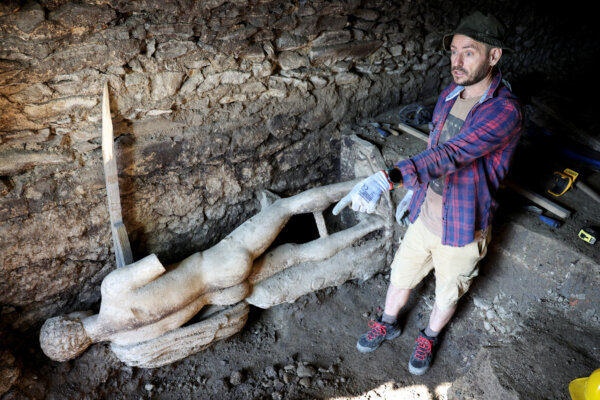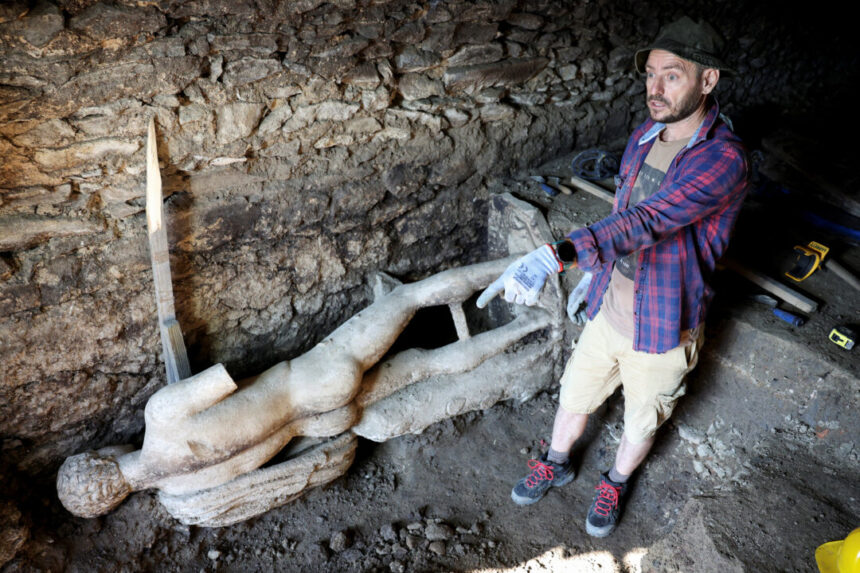
During a recent excavation in an ancient Roman sewer in RUPITE, Bulgaria, archaeologists made a remarkable discovery—a well-preserved marble statue of the Greek god Hermes standing at 6.8 feet tall.
The find took place at the site of the ancient city of Heraclea Sintica in southwestern Bulgaria, near the Greek border. The city was severely affected by an earthquake around A.D. 388, leading to the statue’s placement in the sewers and subsequent burial in soil, which helped preserve its condition.
Leading archaeologist Lyudmil Vagalinski described the statue as a Roman copy of an ancient Greek original, with the head intact and minimal damage to the hands.
Heraclea Sintica was established by the ancient Macedonian king Philip II of Macedon between 356 B.C. and 339 B.C. in what is now the Bulgarian region of Pirin Macedonia. Despite the adoption of Christianity as the official religion in the Roman Empire, the people of Heraclea Sintica seemed to have valued their old deities, as evidenced by their efforts to preserve the statue.
Following the earthquake, the city declined rapidly and was eventually abandoned around A.D. 500.






